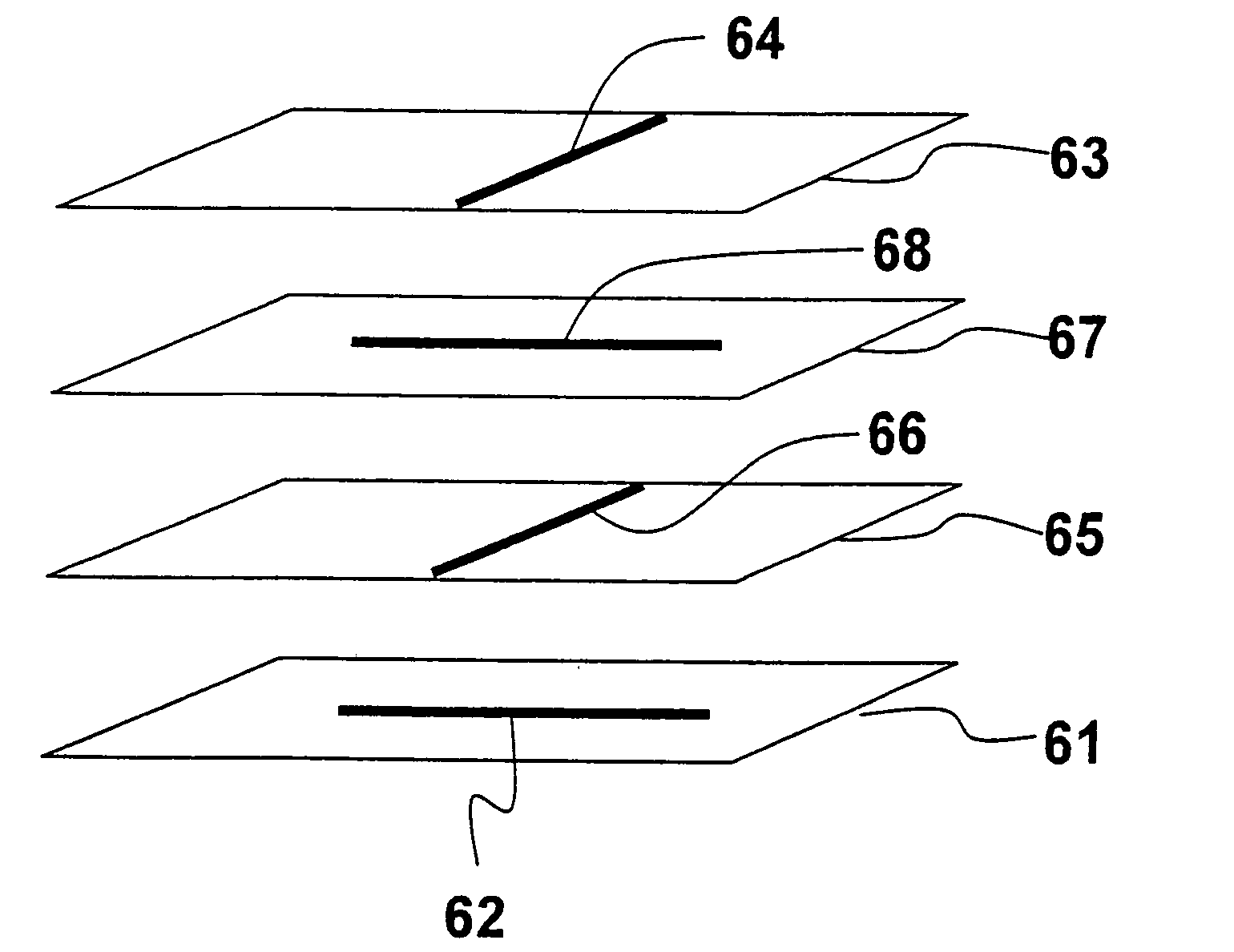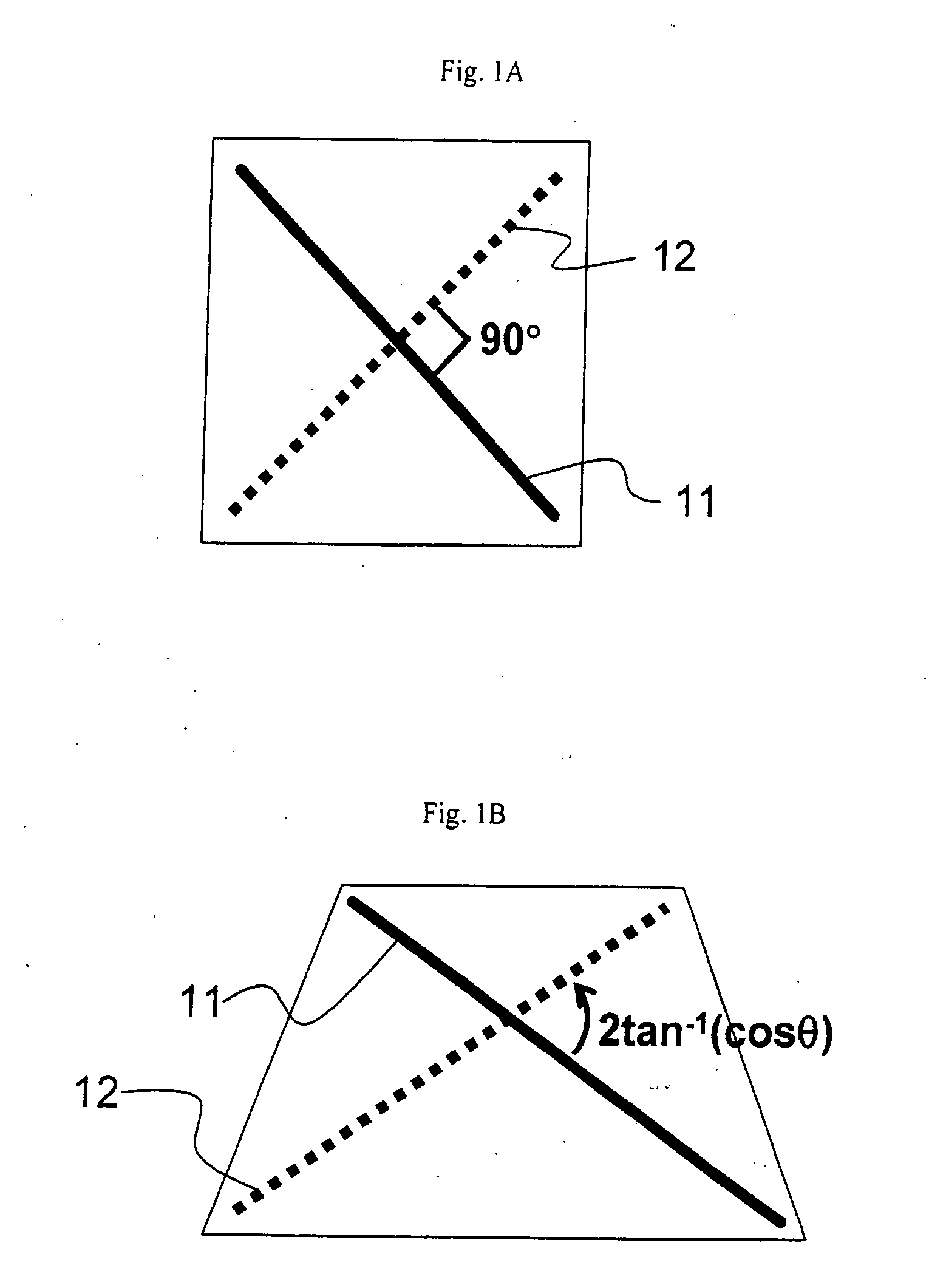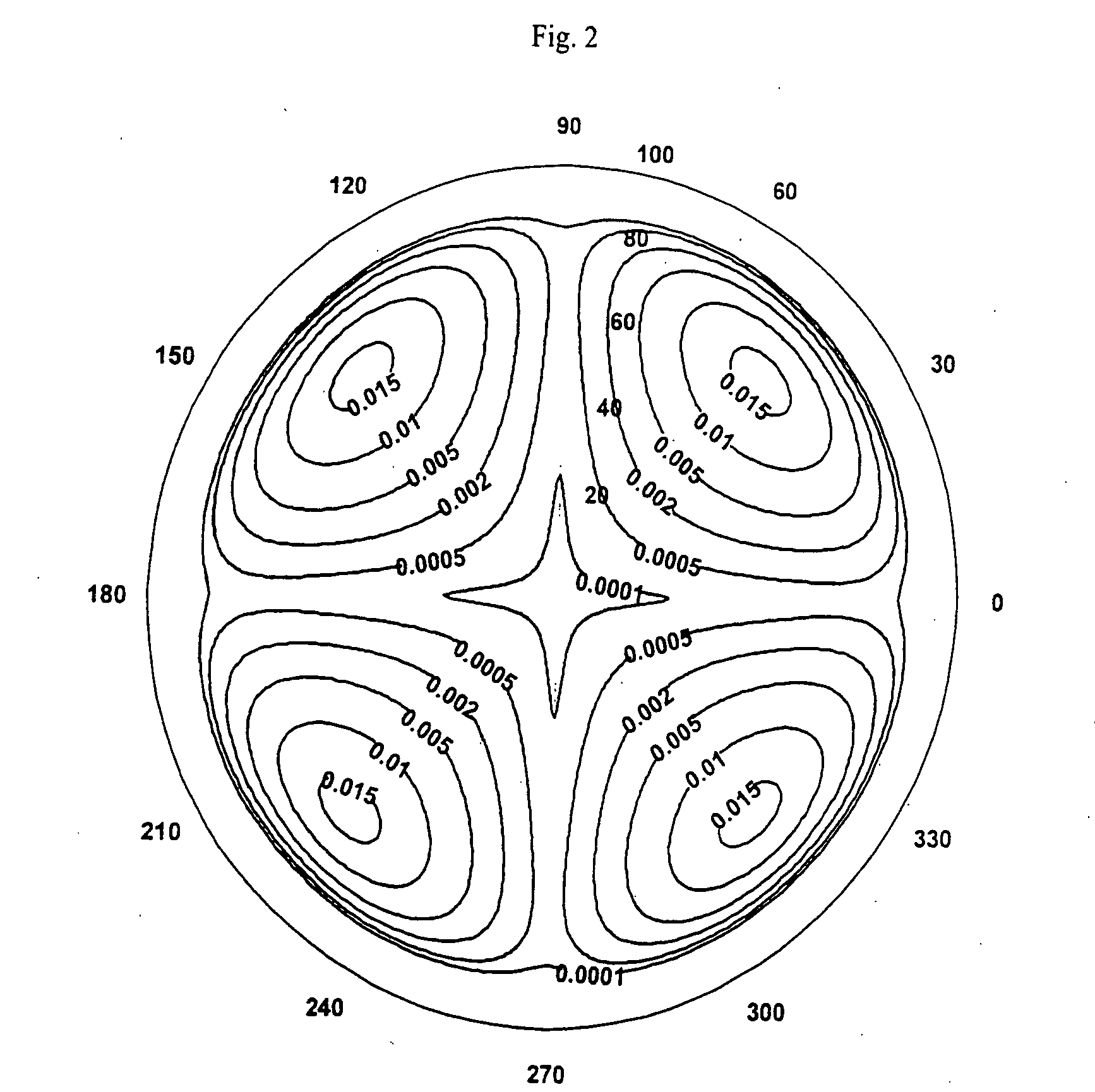Multi-film compensated liquid crystal display with initial homogeneous alignment
a liquid crystal display and homogeneous alignment technology, applied in non-linear optics, instruments, optics, etc., can solve the problems of light leakage, the combination of c-film and a-film or single biaxial film does not achieve the desired symmetric viewing angle, and the cost of a-film is much higher than the cost of a-film
- Summary
- Abstract
- Description
- Claims
- Application Information
AI Technical Summary
Benefits of technology
Problems solved by technology
Method used
Image
Examples
first embodiment
[0079]In a first embodiment, FIG. 10 illustrates the use of the multi-film compensation method and apparatus with an IPS-mode LCD, comprising a bottom polarizer 101 with a first absorption direction 102 and a top polarizer 109 with a second absorption direction 110 perpendicular to the first absorption direction 102 of the bottom polarizer 101, a homogeneously aligned liquid crystal (LC) layer 103 with its alignment direction parallel to the absorption direction 102 of the bottom polarizer 101, a positive A-film 105 with its optical axis 106 perpendicular to the absorption direction 102 of the bottom polarizer 101, a negative A-film 107 with its optical axis 108 perpendicular to the absorption direction 110 of the top polarizer 109.
[0080]The LC layer 103 is substantially homogeneously aligned at off-state when no voltage is applied to the LC layer 103 and forms a twist profile when driven by the lateral electric field generated from the comb-shaped electrodes. While FIG. 10 illustra...
second embodiment
[0084]In a second embodiment, the position of the positive A-film 105 and the negative A-film 107 are exchanged as illustrated in the schematic structure of FIG. 13. Table 3 lists the optimized film parameters for the positive A-film 105 and the negative A-film 107 used in the structure of FIG. 13.
TABLE 3RetardationFilm ThicknessFilm Birefringenceof filmFilm Type(μm)Δn = ne − nodΔn (nm)Positive A-film56.50.001584.8Negative A-film61.5−0.0015−92.3
[0085]The compensation principle for the second embodiment is illustrated by the Poincaré sphere in FIG. 14. FIGS. 15A through 15C show the compensation results showing a contrast ratio that is still larger than approximately 200:1 in the approximately ±80° viewing cone.
[0086]Previous examples and embodiments have illustrated the method and apparatus of the present invention wherein the positive A-film 105 and the negative A-film 107 are laminated to the top substrate of the liquid crystal layer 103. However, the compensation films 105, 107 m...
third embodiment
[0087]FIG. 16 illustrates the structure of the multi-film compensated LCD according to the present invention. The reason that the compensation films 105, 107 can alternatively be laminated to the bottom substrate of the liquid crystal layer 103 is that after the light passes through the compensation films 105, 107, it becomes linearly polarized light along the absorption direction 110 of the top polarizer 109. As long as the liquid crystal layer 103 does not change the polarization state, the light leakage at off-state is eliminated. To do so, the alignment direction of the liquid crystal layer 103 must be parallel to the absorption direction 110 of the top polarizer 109, as shown in FIG. 16. Table 4 lists the optimized film parameters for the positive A-film 105 and the negative A-film 107.
TABLE 4RetardationFilmFilm Birefringenceof filmFilm TypeThickness (μm)Δn = ne − nodΔn (nm)Positive A-film62.50.001593.8Negative A-film58.5−0.0015−87.8
[0088]The compensation principle correspondin...
PUM
| Property | Measurement | Unit |
|---|---|---|
| wavelength | aaaaa | aaaaa |
| polar angle | aaaaa | aaaaa |
| polar angle | aaaaa | aaaaa |
Abstract
Description
Claims
Application Information
 Login to View More
Login to View More - R&D
- Intellectual Property
- Life Sciences
- Materials
- Tech Scout
- Unparalleled Data Quality
- Higher Quality Content
- 60% Fewer Hallucinations
Browse by: Latest US Patents, China's latest patents, Technical Efficacy Thesaurus, Application Domain, Technology Topic, Popular Technical Reports.
© 2025 PatSnap. All rights reserved.Legal|Privacy policy|Modern Slavery Act Transparency Statement|Sitemap|About US| Contact US: help@patsnap.com



